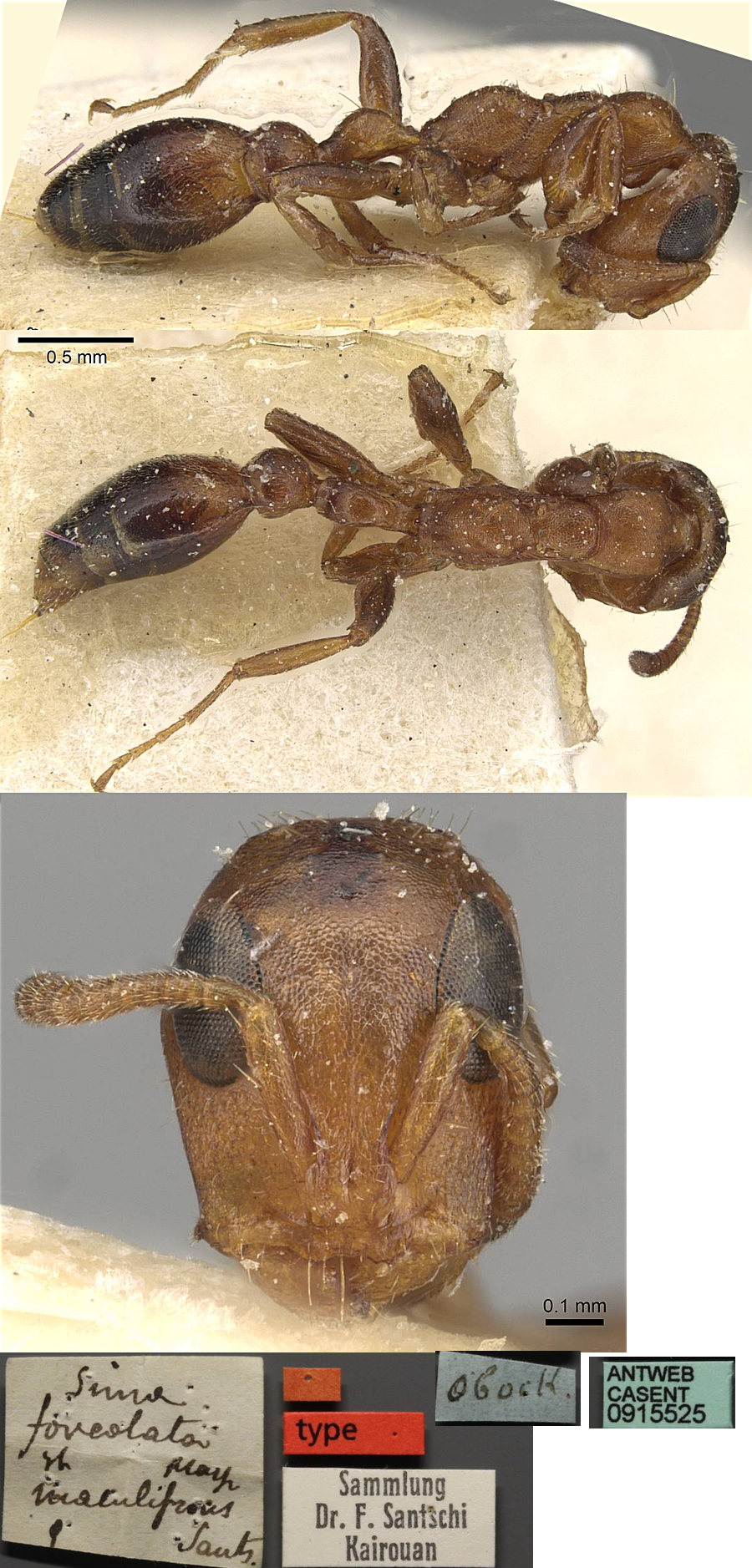Tetraponera maculifrons (Santschi)
 Type
location Djibouti
(Sima foveolata Mayr stirps maculifrons n. sp.,
Santschi,
1912b: 162, worker; in Tetraponera, Wheeler, 1922: 797)
collected at Obock - see below Type
location Djibouti
(Sima foveolata Mayr stirps maculifrons n. sp.,
Santschi,
1912b: 162, worker; in Tetraponera, Wheeler, 1922: 797)
collected at Obock - see below
varieties
syriaca (Sima bifoveolata
var. syriaca,Wheeler & Mann, 1916, 167, worker) from Egypt,
collected in Sinai, by W M Mann - see below (not from Antweb)
umbrata (Sima
(Tetraponera) bifoveolata stirps maculifrons Sants. v. umbrata n. var.,
Santschi, 1929c: 98, worker) from Algeria,
Tifedest, 1928 - see below
worker only described (see Bolton,
1995)  . .
|
Santschi's (1912b)
description is at  . Santschi's (1929c)
description of umbrata is at . Santschi's (1929c)
description of umbrata is at  . Wheeler & Mann's
(1916) description of syriaca is at . Wheeler & Mann's
(1916) description of syriaca is at  . .
Mayr (1895) also noted its collection at Zanzibar, Tanzania.
Menozzi (1926a) reported the queen from Somalia, at El Bar El
Ellan.
The Wheeler & Mann specimens in the MCZ photograph, assuming the
scale is correct, has a TL of over 6 mm; whereas Mayr (1895) gave the
type bifoveolata TL as 3.8-4.2 mm; Mayr also noted abundant
pubescence on the type bifoveolata and none is obvious on the
MCZ syriaca specimen.
|
 The
photomontage of the type
worker is collated from https://www.antweb.org/specimenImages.do?code=casent0915525 The
photomontage of the type
worker is collated from https://www.antweb.org/specimenImages.do?code=casent0915525
The type of Santschi (1929c) who also listed it as from Mali, Koulouba.
It and others are listed by Santschi
(Santschi, 1934f). He commented on it solely as a variation from the
type Tetraponera bifoveolata.
Comparing this worker and the remains of the bifoveolata type there is no
obvious difference in morphology. From the evidence of the Tanzania
specimens I have, both are the minor morph of the workers. What is
constant, however, between the two species is that the bifoveolata
specimens all have quite a dense covering of pubescence and more
obviously abundant erect hairs.
|